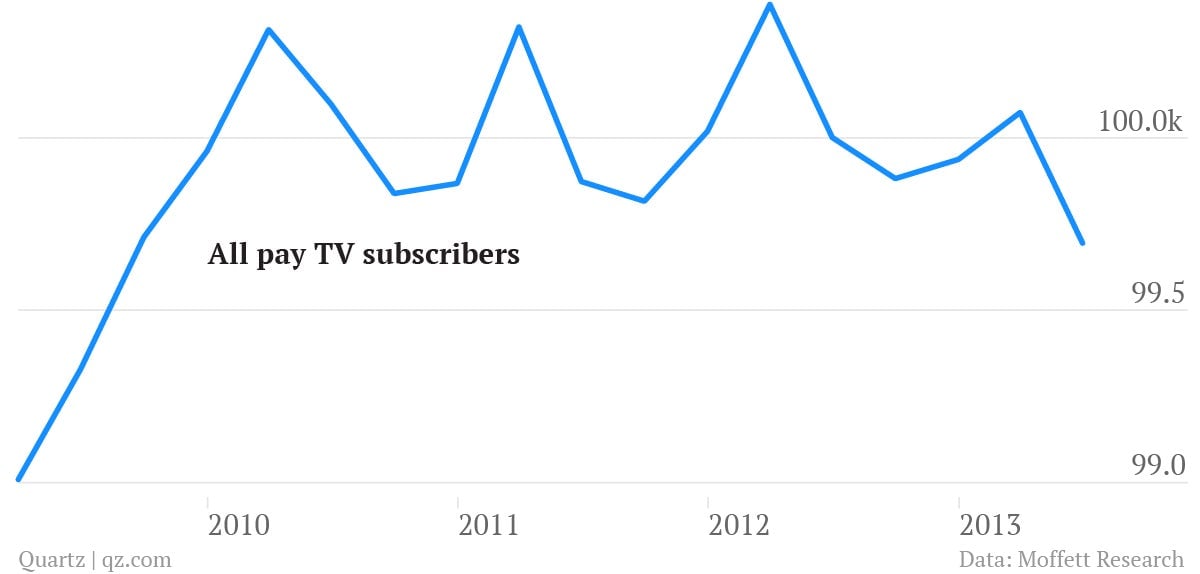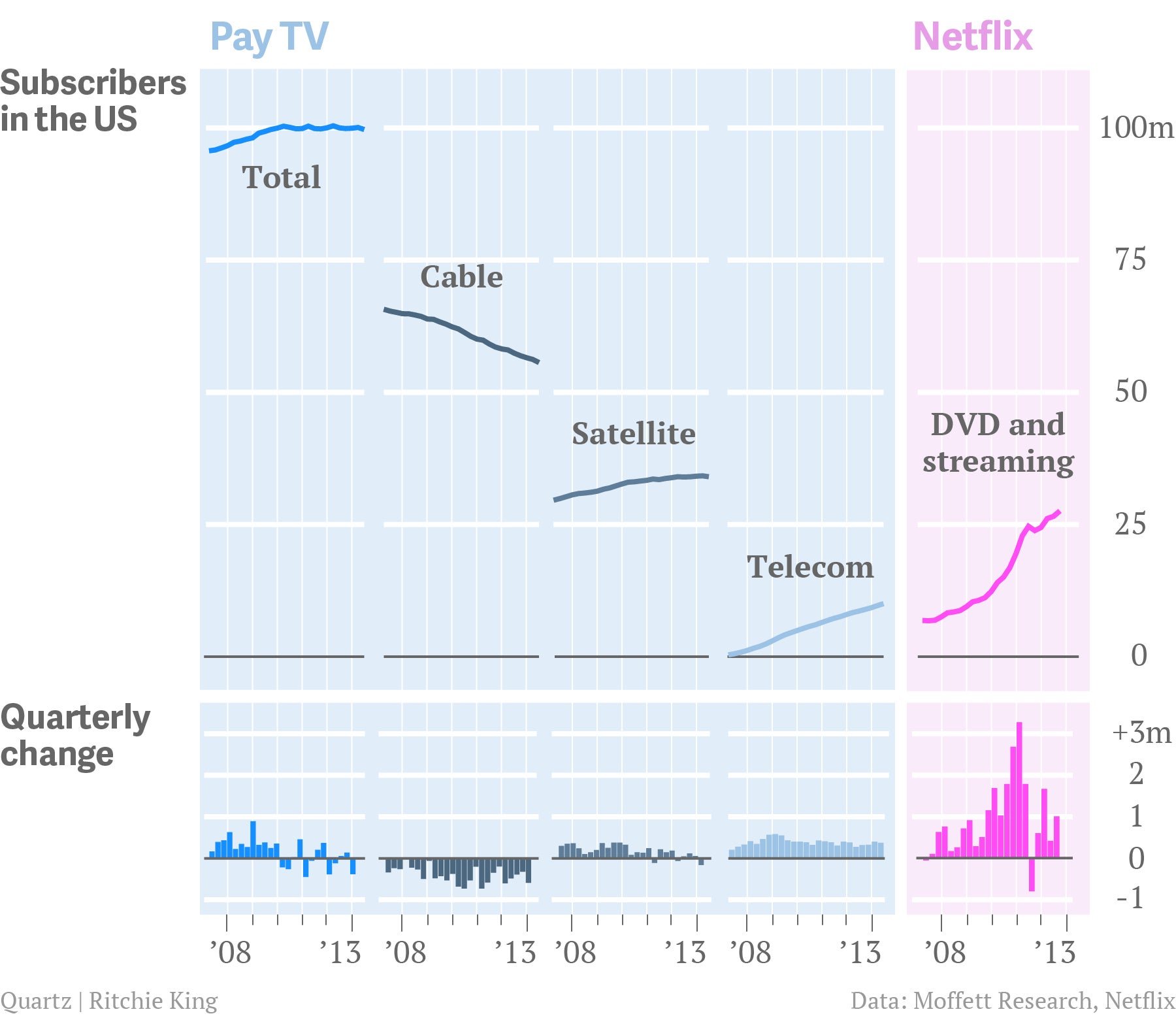Americans are starting to cut the cable TV cord, and here’s what it looks like
Americans are starting to ditch pay television.


Americans are starting to ditch pay television.
It’s been suspected for several years that more Americans were cutting the cord—that is, going without cable—than were signing up for new pay TV subscriptions. But solid evidence of the trend had been difficult to find. Though subscriptions to pay TV began to stall in late 2009, possible explanations included market saturation and more young adults living at home.
But now the US housing market is rebounding, there are more potential customers, and household spending has recovered from the recession, yet subscriptions to pay TV are their lowest level in four years (99.7 million households). “Cord cutting used to be a myth,” concludes analyst Craig Moffett in a research note first reported by AllThingsD. “It isn’t anymore.”
Here’s the five-year trend, according to Moffett Research‘s data:

Exactly what’s behind the cord cutting is hard to discern. The theory that scares the pay TV industry most is that Americans are increasingly content to stream movies and shows online, using services like Netflix. Moffett is less convinced: He surmises that people, trying to cut household costs, are switching to free network television delivered through antennas.
Whatever the cause, the data are pretty clear: Cable providers, such as Time Warner Cable and Comcast, have been steadily losing subscribers. The growth of satellite TV (DirecTV and Dish Network) and pay TV services offered by telecoms (AT&T and Verizon) hasn’t been able to compensate. Meanwhile, Netflix has exploded:
